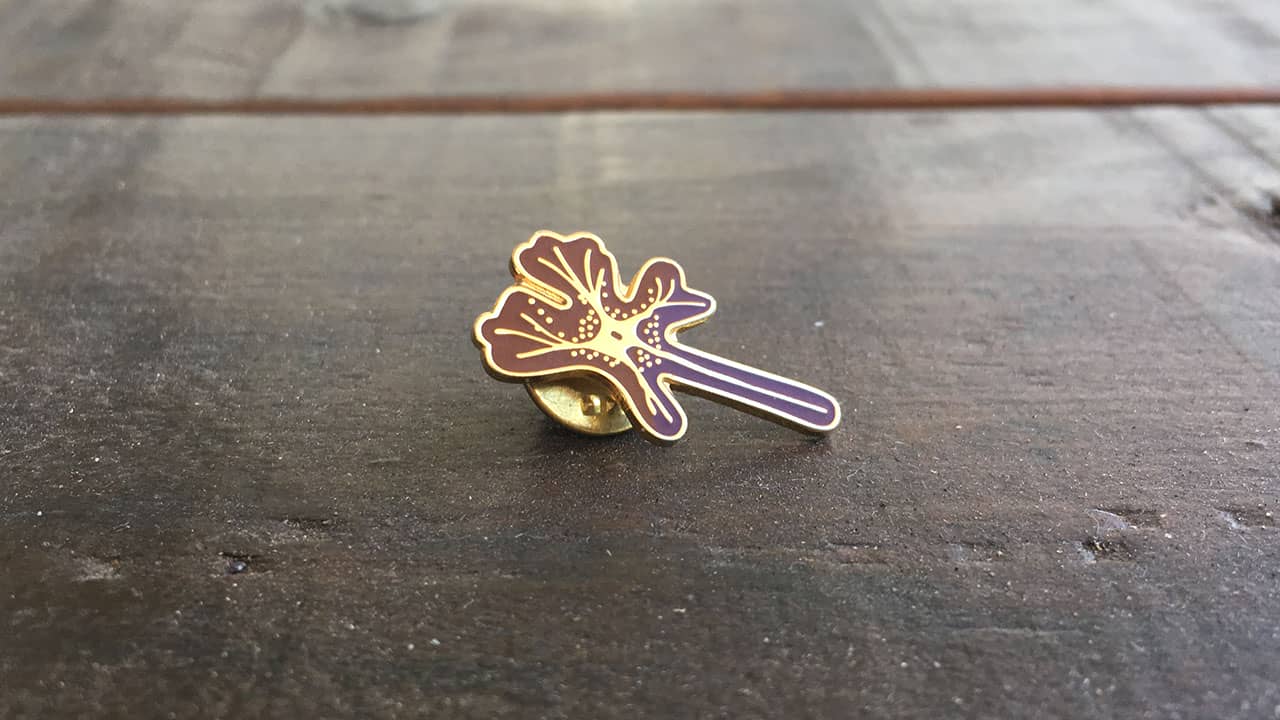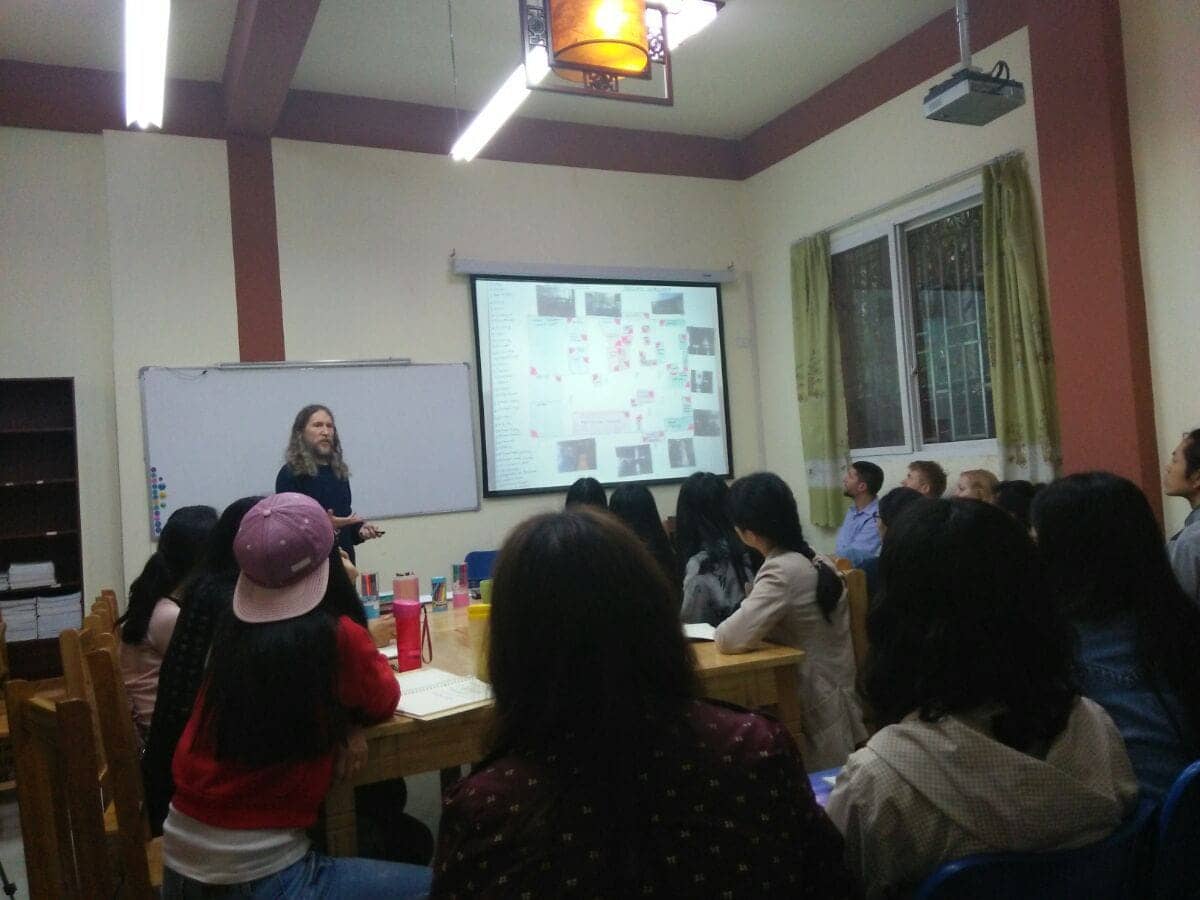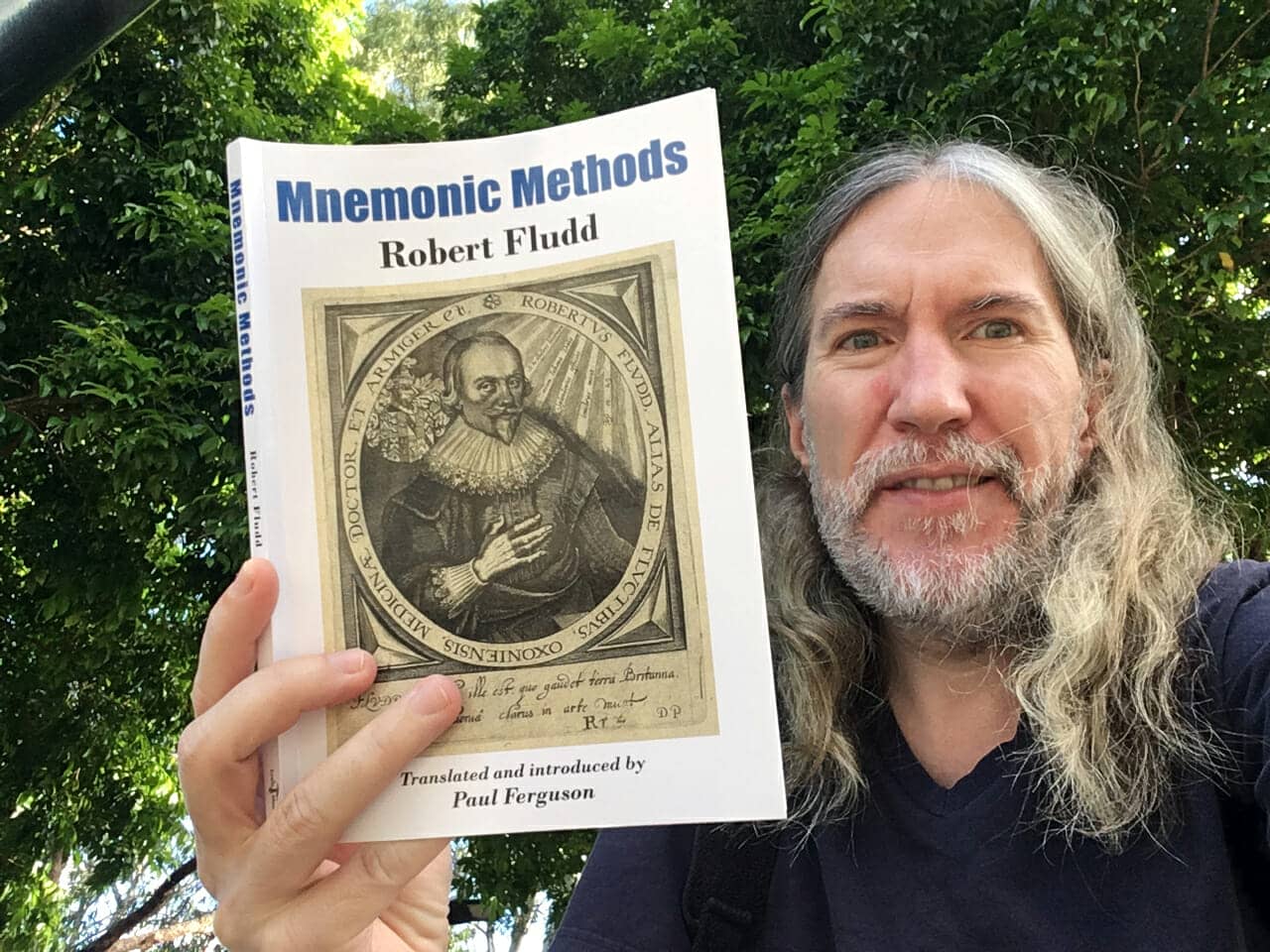با برنامه Player FM !
The 10 Best Memory Palace Books to Supercharge Your Brain
بایگانی مجموعه ها ("فیدهای غیر فعال" status)
When?
This feed was archived on February 19, 2024 00:56 (
Why? فیدهای غیر فعال status. سرورهای ما، برای یک دوره پایدار، قادر به بازیابی یک فید پادکست معتبر نبوده اند.
What now? You might be able to find a more up-to-date version using the search function. This series will no longer be checked for updates. If you believe this to be in error, please check if the publisher's feed link below is valid and contact support to request the feed be restored or if you have any other concerns about this.
Manage episode 258875734 series 1375140
 Are you looking for the best Memory Palace book to help you keep your memory razor-sharp?
Are you looking for the best Memory Palace book to help you keep your memory razor-sharp?
Ask any search engine, and it will throw up plenty of memory improvement book recommendations with techniques that may or may not work for you.
Which one do you choose?
And, could there be any alternative ways to train your brain to remember and recall everything you want to?
On this page, I’ve shared nine Memory Palace book recommendations to make your search easier. I’ve read each one personally (in some cases several times). With each recommendation, I’ll let you know a bit of my personal history with them and how they’ve helped me specifically.
At the end, I’ll also show how to sharpen your memory by putting the ideas in these books to use.
Here’s what I’ll cover:
- 10 Best Books to Learn Memory Techniques and Improve Your Memory
- 3 Better Ways to Improve Your Memory
Ready?
The 10 Best Memory Palace Books
Many others talk about the concept of Memory Palaces. As we go through this list, keep in mind that I’ve only included these books because these books go further than just chatting about the technique as an idea.
They show you what the technique is and help you put it into action.
https://www.youtube.com/watch?v=LqZ8xTtEP04
With that point in mind, let’s get into this treasure trove of memory improvement ideas, including the art of building memory palaces.
1. Memory Craft by Lynne Kelly
Perhaps the most important memory improvement author at the moment, is Lynne Kelly.
Her book, Memory Craft, offers a unique exploration of the Memory Palace because she embeds it in the full tradition. Her approach is also both scholarly and deeply personal.
For example, she uses a lot of neighborhood walks to form her Memory Palaces. And drawing upon the tradition, she uses animals linked to the alphabet to assign her images.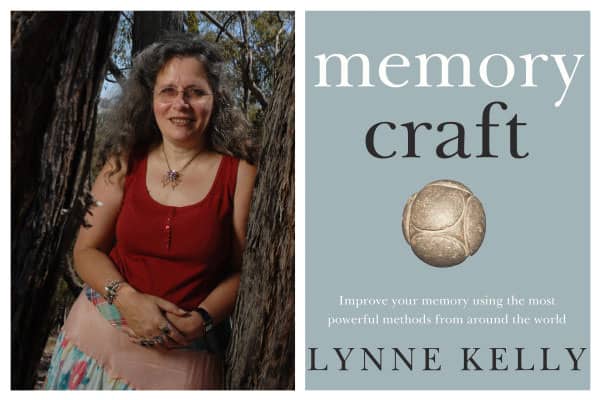
Kelly is also well-versed in the Aboriginal variation of the Memory Palace technique, known as the Songline. She creates memory boards (lukasa) and helps you understand how they works as mini-Memory Palaces with practical examples from her own learning projects.
Overall, Memory Craft is a celebration of the diverse ways humans have committed information to memory and transmitted it. This book will not only educate you, but also provide endless fascination and inspiration as you begin your exploration of the ultimate memory technique.
2. Moonwalking with Einstein: The Art and Science of Remembering Everything by Joshua Foer
First published in 2011, Joshua Foer’s bestseller debuted at No. 3 on the New York Times bestseller list and stayed on the list for eight weeks. I’ll never forget how inspired I felt when I read it the same week it appeared in bookstores.
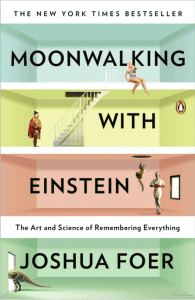
In his engaging writing style, Foer takes you on a fascinating journey through how the mind of a memory champion works. From that perspective, the book goes in-depth about the mnemonic techniques they use to store memories.
A freelance science journalist, Foer learned the technique of memory training while researching the US Memory Championship. At the contest, Foer observed how people would memorize an entire deck of cards in just a couple of minutes.
This fascinated him and got him thinking whether the skill could be learned. Foer discovered that individuals who aced memory contests used special strategies handed down from the ancient Greeks to visualize things.
Most people use Memory Palaces by visualizing a structure (such as their home) in their mind — these Memory Palaces usually have several different rooms and people inside who represent what they are trying to remember.
He decided to test his own memory power.
A year later, he won the US Memory Championships against champion ‘mental athletes’ who could memorize the exact order of ten shuffled decks of cards in less than an hour.
The book draws on thorough research, the history of memory studies, and various tricks of mental champions.
I have a personal connection to the book too, a connection that never would have formed had I not read it those many years ago. In the opening pages, Joshua Foer discusses a pin worn by my dearly departed friend and mentor Tony Buzan.
That pin was given to various people by Buzan as the “Warrior of the Mind Emblem for Outstanding Contributions to Global Mental Literacy.” I’ll never forget when Buzan awarded it to me. Anyhow, when you come across that part of Moonwalking with Einstein, this is what the pin looks like:
3. The Art of Memory by Frances A. Yates
Published in 1966, The Art of Memory is still referenced in influential memorization guides and books today.
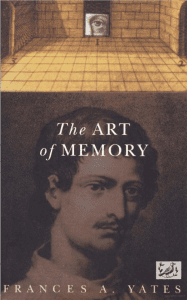
The author, France A. Yates, traces the development of the mnemonic systems from the Simonides of Ceos era through the Renaissance until the 17th century when scientific methods were initiated.
This is the oldest mnemonic strategy and is also known as the method of loci.
The book narrates the story of Simonides, who was hired by a nobleman to read poems during a banquet. After the reading, he was asked to go outside to meet someone. Before he could re-enter the banquet hall, it collapsed, killing everyone inside.
All the bodies were mangled beyond recognition. The story goes that Simonides used his memory to recall the faces and names of every person that was killed. He realized the importance of recalling facts based on their locations or the method of loci.
These ideas hold good even now.
https://www.youtube.com/watch?v=TG5Fdilr9YI
For example, if a defense lawyer needs to recall evidence during a trial, he can first create mental images of a place familiar to him – maybe his home – and peg each piece of evidence to a room.
During the trial, he can then recall those pieces of evidence by mentally walking through his house.
But there’s more to it than memory stunts for winning court cases. In this video, I talk about my some of the problems with the book. They relate to Yates’ hotly contested interpretation of a Renaissance memory master named Giordano Bruno.
https://www.youtube.com/watch?v=k3GGcO5Cx3I&list=PLkZ2FGJhR5R9njWtWwRrkZKaq8j7OjDL3
Don’t get me wrong: The book is excellent. But my own research has shown that her interpretations of Bruno as misguided. She’s much stronger on Robert Fludd, however. I’ll introduce you to him a little bit later in this list.
4. The Memory Palace of Matteo Ricci by Jonathan Spence
In this book, the author explores the story of a Jesuit priest named Matteo Ricci who lived during the 16th century, and how he used special mnemonic memory techniques to convert the Chinese to Christianity.
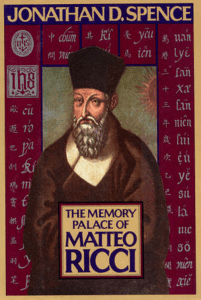 The priest joined the new Catholic order, the Society of Jesus, in 1571 and studied law in Rome. At that time, the order was quite young and needed to widen its influence. To ensure this, it would send young priests into the world to convert people to Catholicism.
The priest joined the new Catholic order, the Society of Jesus, in 1571 and studied law in Rome. At that time, the order was quite young and needed to widen its influence. To ensure this, it would send young priests into the world to convert people to Catholicism.
The story goes that Ricci became a willing member of that mission and sailed to China as a missionary. For more than three decades, Ricci used his vibrant personality to convert the Chinese to Catholicism. I imagine he knew a lot about how to memorize speeches.
During his efforts, the Jesuit priest believed he could convert more people by impressing them with his learning. That was when he started to use mnemonic devices to memorize huge amounts of information.
One of his key tasks was to convey basic Christian principles to the Chinese people in a manner they could appreciate and learn from. So he turned to memorization techniques for help.
He taught the Chinese people the art of creating memory palaces through images in their heads, helping them store several pieces of information in their mind and be able to recall it later.
The images acted as a narrative or a story helping the Chinese understand the Bible and its teachings through their own cultural and spiritual norms.
Overall, I found this book so interesting, I made it a priority to visit Ricci’s grave the first time I visited Beijing. Here’s a pic from my personal travel collection:
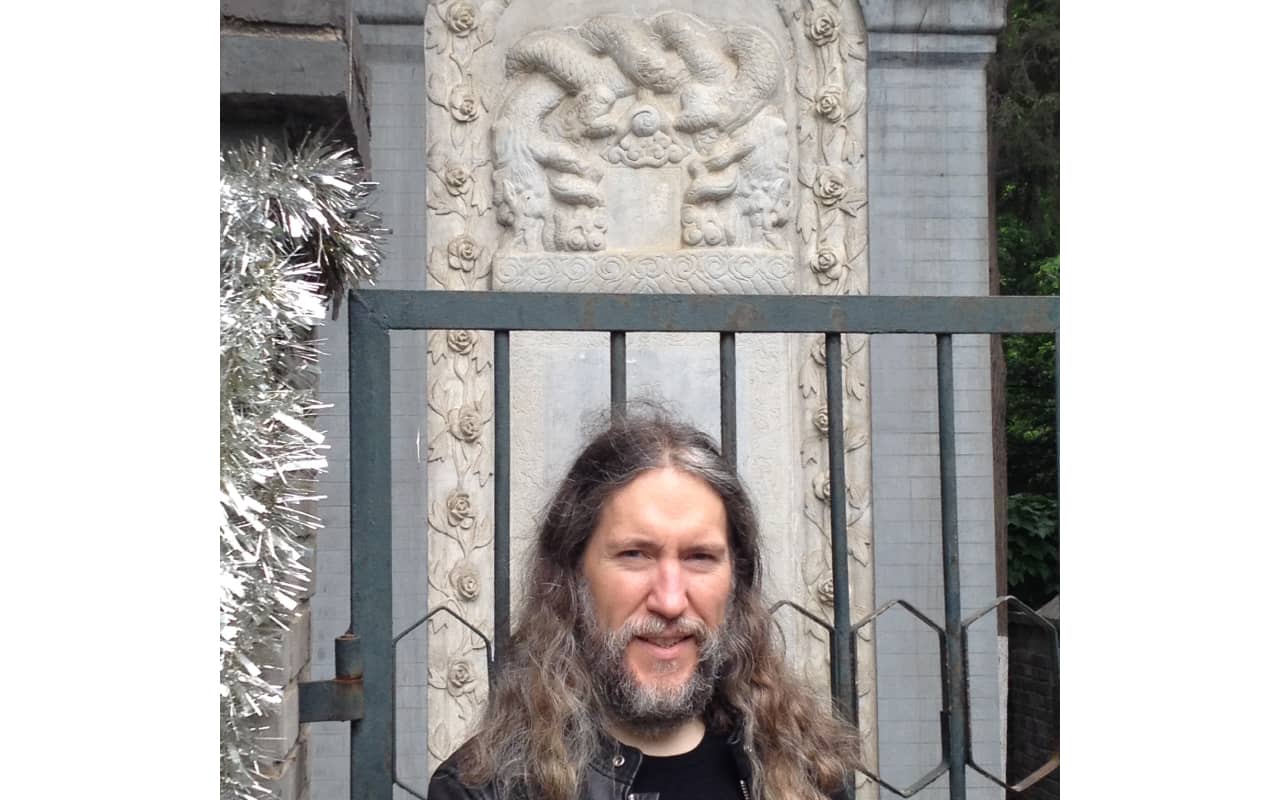
Beyond that, Ricci inspired me to start learning Chinese. In fact, when the Chinese Language Institute in Guilin heard me talk about Spence’s study of Ricci on the Magnetic Memory Method Podcast, they invited me to given a presentation at their school. I did and it was a lot of fun. I almost felt like I was leading a life much like Ricci’s own.
Although you might not wind up having an adventure like I did after reading this book, another thing I love about it is how it gives you insight into Ricci’s approach to memorizing Chinese characters. It did a lot to help me come up with my own.
5. How to Remember Anything by Mark Channon
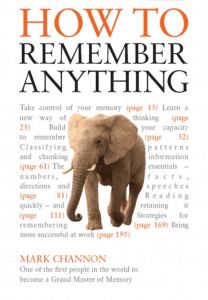
In this book, memory grandmaster and author Mark Channon focuses on how a radically improved memory can add more value to anyone’s personal and professional life.
It is filled with memorization techniques that teach you how to recall numbers, dates, and facts, as well as ideas on how to remember them by using different processing strategies.
This makes Channon’s book one of the most practical ones on the art of memory improvement.
It comes with innovative exercises that can build the confidence and vocabulary of readers. It also includes core strategies that can make memories and mental images more ‘magnetic’.
An aspect that has helped me the most from Channon’s book involves the exercises he suggests. They will give your memory a fantastic workout.
6. Unlock Your Amazing Memory: The Fun Guide That Shows Grades 5 to 8 How to Remember Better and Make School Easier by Brad Zupp
If your children are struggling with learning in school, this book has plenty of ideas you could use.
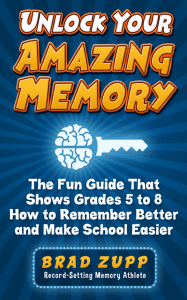 It outlines powerful strategies that can improve memorization skills while making it a fun activity. The techniques teach them to remember what they see, read, and hear – three traits that can result in better grades and more confidence in classroom settings.
It outlines powerful strategies that can improve memorization skills while making it a fun activity. The techniques teach them to remember what they see, read, and hear – three traits that can result in better grades and more confidence in classroom settings.
These strategies are scientifically proven and claim to have helped thousands of students — those who want to improve their grades, who are forgetful, lack motivation, prefer some subjects over others, feel stressed out or bored in class, and those who have a hard time completing their homework on time.
The book is based on The Feats of Memory show which is an assembly program that was created by the author, Brad Zupp himself. Teachers who have used his techniques say that it transformed the way their students processed their lessons and made tremendous improvements.
The guide also dives into the main issues that affect our attention spans – our memory and focus. This makes it especially useful for students in grades 5 to 8. Children in grades 3 and 4 can also benefit from it with some help from parents and teachers.
Zupp’s devotion to helping young people has inspired me many times over the years. I always recommend this book when parents ask me for suggestions to help their kids learn memory techniques.
7. The Victorious Mind: How To Master Memory, Meditation and Mental Well-Being by Anthony Metivier
So maybe it’s cheating a little bit to include your own book, but if you’re looking for the best books to help you learn memory techniques it’s one I highly recommend!
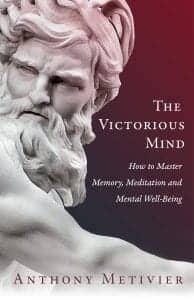 The Victorious Mind tells the story of how I overcame the mental distress that imprisoned me in a “highly functioning manic-depressive” identity and almost took my life. I used just three practices to do so: self-inquiry meditation, memory training, and “biohacking.”
The Victorious Mind tells the story of how I overcame the mental distress that imprisoned me in a “highly functioning manic-depressive” identity and almost took my life. I used just three practices to do so: self-inquiry meditation, memory training, and “biohacking.”
But more than a story of self-transformation, it offers detailed guidance through the techniques I used to release myself from the haze of lithium along with the illusion of self.
This book is ideal not just for those struggling with mental illness but for anyone suffering mental malaise – whether it’s digital amnesia and scatterbrain, depression, or “control freakism.”
I share a lot of personal stories in this book. That was hard to do, but I got myself to do it because using memory techniques helped save my life. I don’t mind exposing my troubled background if it will help others receive the help they need too.
8. Mnemonic Methods by Robert Fludd
Like Giordano Bruno, Robert Fludd believed it was possible to know and understand everything. That said, he also included a twist on the notion of “everything” by suggesting that we need to also know how to contend with two other things:
- Nothingness
- Incoming information
The nothingness part is a bit complicated because he basically says that nothing is always a something. Philosopher Eugene Thacker has explained how this concept works in more detail than we need to get into here.
In Mnemonic Methods, translator Paul Ferguson has cut out everything from Fludd’s The Metaphysical, Physical, and Technical History of the Two Worlds, the Major as well as the Minor that doesn’t have to do with memory.
This helps us as readers focus only on Fludd’s mnemonic ideas, and they are powerful.
In brief, Fludd helps the reader establish:
- Memory Palace systems
- Alphabet pegwords
- A number shape system
These days most of us memorize numbers with the Major Method and build that mnemonic system out to a PAO System. Nonetheless, Fludd’s mnemonic examples are great to go through and can help you arrive at ideas of your own.
What I appreciate about this translation above all is that the publisher has included Fludd’s original Latin. As a student of Latin myself, it is wonderful to be able to practice the language while going through incredible instructions about how to use memory techniques.
Want to know more? Here’s a full review of this book in the context of Robert Fludd’s life.
9. The Hermetic Art of Memory
I was delighted when Lewis Masonic sent me The Hermetic Art of Memory. Here’s a full video review:
https://www.youtube.com/watch?v=ArFTgRDIWo4
The two things I love most about this book are:
- Its review of the classic memory techniques people have been using since ancient times
- Its many wonderful philosophical points
If you’re into Zen and like to read from a teacher who inspires you to take action, this book uses a lot of philosophical ideas to help prompt you to take action.
10. Advanced Memory Palaces
Joe Reddington told me during a recent discussion the he wrote Advanced Memory Palaces because he’s “cynical” about how many other books talk about this incredible memory technique.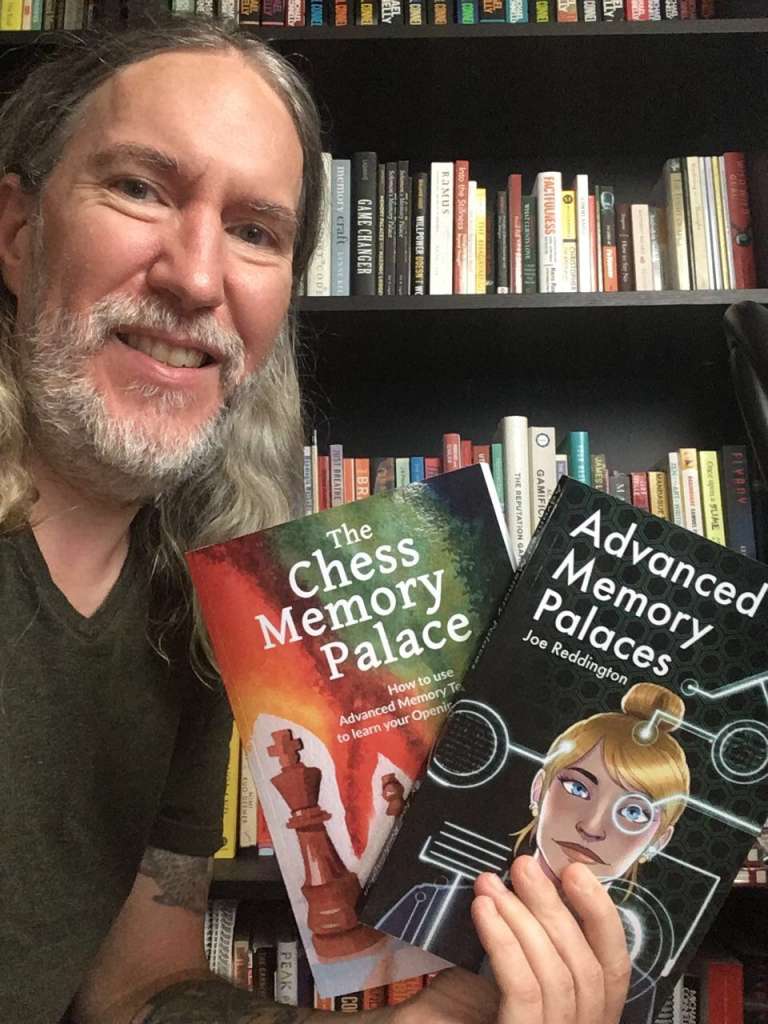
I agree with him that there is a real problem out there – something I outlined above when discussing Yates’ The Art of Memory.
I’m sharing details about Advanced Memory Palaces because I think Reddington not only addresses the problem quite well. His solutions are realistic and well-worth exploring.
His concept of the “skip list” is compelling and he brings all kinds of experience from computer programming to his thinking about using location-based mnemonics.
Personally, I have found it tremendously thought-provoking and that is itself of tremendous value for anyone serious about mastering their use of this technique.
With all these wonderful books in mind, let’s turn now to how you can get the most from reading them.
What To Do After You Read A Memory Palace Book
All these books on memory are sure to give you a wonderful insight into the art of brain training using mnemonic techniques, including Memory Palaces.
However, let’s face the facts:
Learning something by reading a long book may not be everyone’s cup of tea. Unless you diligently make notes and push yourself to try out the instructions, your chosen Memory Palace book will end up being just a dusty one on your bookshelf.
What could be more achievable is this: Make a few small lifestyle changes, or learn from online videos and courses that you can re-read quickly or listen to any time.
Here are three alternative ways to improve your memory based on lifestyle that could be far easier to implement. Work with these and you almost certainly will be able to read more books, more often and get more out of them.
3 Better, Alternative Ways to Improve Your Memory
A few lifestyle changes, and creating Memory Palaces using the Magnetic Memory Method regularly will help you sharpen your memory with just a little daily effort from you.
Let’s look at three ways you can do this.
1. Practice Mindfulness
Mindfulness is about listening to your mind and body, being aware of your surroundings, and being completely present in the moment you live in. Mindfulness expert Jon Kabat-Zinn calls it “moment to moment non-judgmental awareness”.

Practicing mindfulness meditation for just 10-20 minutes a day can work wonders on your memory. You can also do it while doing your daily chores – just by stopping for a minute to take in the sensation of whatever you’re doing – eating a meal, walking to work, or driving down a busy road.
Mindfulness is known to increase blood flow to the brain. It can strengthen the network of blood vessels in your cerebral cortex and reinforce memory capacity.
Meditation reduces stress on your brain and can be effective in improving memory — even after a brain injury.
A recent study proved that mindfulness improves your working memory. A few participants spent a few weeks learning to focus on breathing and body sensations, being aware of what was happening around them, and redirecting their attention when they were distracted.
After this, they took memory tests that clearly showed an improvement in short-term memory and a slight increase in hippocampus volume.
And just so you know that I walk my talk on this one, here you see me recite 32 verses of Sanskrit in front of a live audience while meditating:
https://www.youtube.com/watch?v=CgNQ9bU-nEg
It is really fun and so much more powerful when you combine meditation with a Memory Palace strategy!
2. Try Word Puzzles and Games
Word puzzles like crosswords, word association games, and Scrabble can stimulate your brain. They activate parts of the brain that deal with vocabulary and word finding, forcing the brain to stay active. It can delay any cognitive decline due to aging and mental illness.
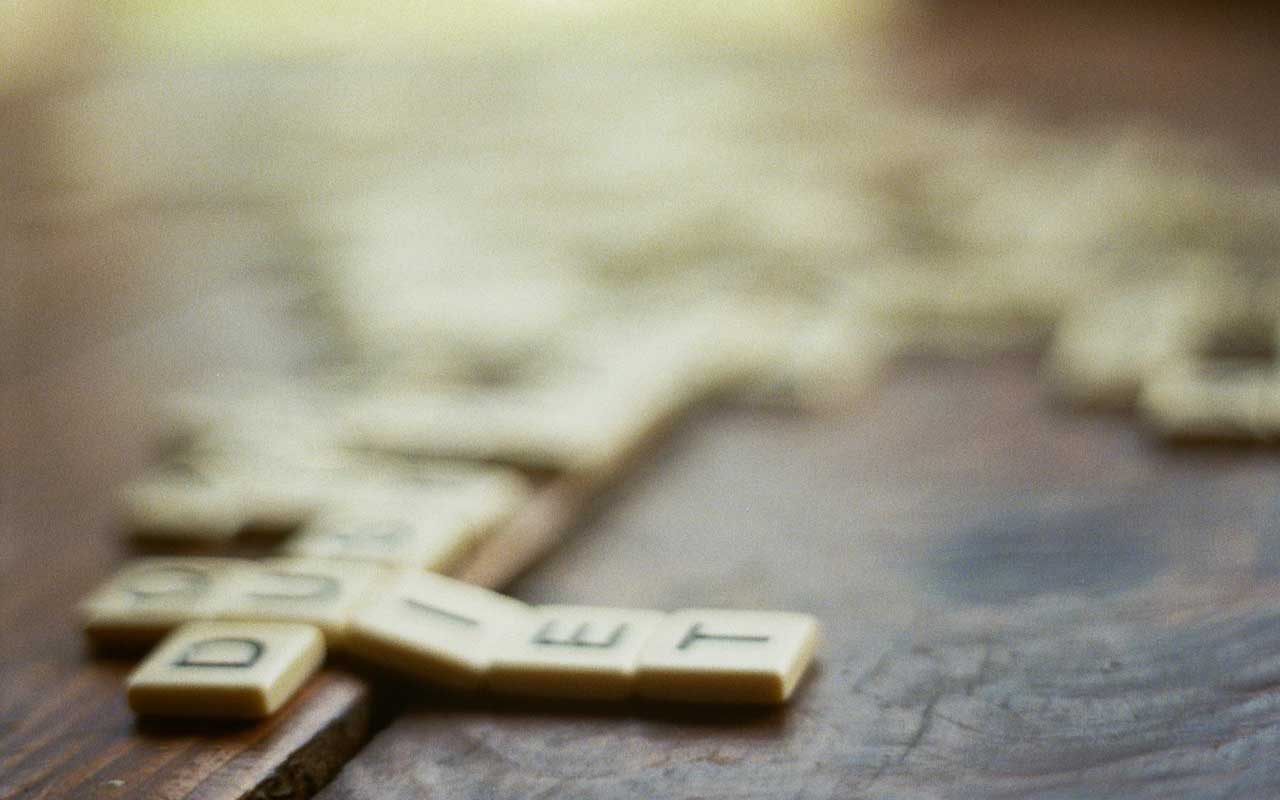
Research proves that using crossword puzzles to teach a second language is an effective strategy of vocabulary instruction. Paper-based and interactive puzzles are used frequently in language teaching, to make learning interesting for teaching spelling rules, lexical meanings, and synonyms.
Opt for the old-school way of doing it — use newspapers or puzzle books you can scribble on, rather than mobile apps that pop up distracting ads or tempt you to switch away to social media.
Remember to vary the type and difficulty of word puzzles frequently. Once you’re an expert at simple crosswords, go for more cryptic ones.
3. Build Memory Palaces using the Magnetic Memory Method
Memory Palace is a powerful mnemonic tool to develop and use your spatial memory in a way that unlocks the power of autobiographical memory, episodic memory, semantic memory, procedural memory, and more. You can also move information into long-term memory faster for years to come.

Building Memory Palaces using the Magnetic Memory Method will provide you with the ultimate organizational system for learning, committing things to long-term memory, and recalling anything.
The trick is to associate information to parts of a location you’re familiar with. This helps your brain file things to remember them easily.
So if you’re learning a new language, peg all words related to travel on your living room sofa, words related to the weather on your dining table, and so on. You could use familiar locations so that you spend your time in quickly memorizing a lot more information, and reduce cognitive load.
The more you practice mnemonic methods for learning and recalling vocabulary, routes, names, and so on, the easier the process becomes.
Improve Your Memory Magnetically with These Books on Memory Improvement
The six books on memory recommended above (and any others like the one by Bartok) will give you a good understanding of the history of memory improvement techniques and ideas on how to build Memory Palaces.
But, creating memory palaces regularly using the Magnetic Memory Method can be the quickest and most effective way to learn, memorize, and recall anything.
If you’d like to get started (for free), sign up for my memory improvement kit.
And before you go, please let me know:
What are your favorite memory improvement books?
511 قسمت
بایگانی مجموعه ها ("فیدهای غیر فعال" status)
When?
This feed was archived on February 19, 2024 00:56 (
Why? فیدهای غیر فعال status. سرورهای ما، برای یک دوره پایدار، قادر به بازیابی یک فید پادکست معتبر نبوده اند.
What now? You might be able to find a more up-to-date version using the search function. This series will no longer be checked for updates. If you believe this to be in error, please check if the publisher's feed link below is valid and contact support to request the feed be restored or if you have any other concerns about this.
Manage episode 258875734 series 1375140
 Are you looking for the best Memory Palace book to help you keep your memory razor-sharp?
Are you looking for the best Memory Palace book to help you keep your memory razor-sharp?
Ask any search engine, and it will throw up plenty of memory improvement book recommendations with techniques that may or may not work for you.
Which one do you choose?
And, could there be any alternative ways to train your brain to remember and recall everything you want to?
On this page, I’ve shared nine Memory Palace book recommendations to make your search easier. I’ve read each one personally (in some cases several times). With each recommendation, I’ll let you know a bit of my personal history with them and how they’ve helped me specifically.
At the end, I’ll also show how to sharpen your memory by putting the ideas in these books to use.
Here’s what I’ll cover:
- 10 Best Books to Learn Memory Techniques and Improve Your Memory
- 3 Better Ways to Improve Your Memory
Ready?
The 10 Best Memory Palace Books
Many others talk about the concept of Memory Palaces. As we go through this list, keep in mind that I’ve only included these books because these books go further than just chatting about the technique as an idea.
They show you what the technique is and help you put it into action.
https://www.youtube.com/watch?v=LqZ8xTtEP04
With that point in mind, let’s get into this treasure trove of memory improvement ideas, including the art of building memory palaces.
1. Memory Craft by Lynne Kelly
Perhaps the most important memory improvement author at the moment, is Lynne Kelly.
Her book, Memory Craft, offers a unique exploration of the Memory Palace because she embeds it in the full tradition. Her approach is also both scholarly and deeply personal.
For example, she uses a lot of neighborhood walks to form her Memory Palaces. And drawing upon the tradition, she uses animals linked to the alphabet to assign her images.
Kelly is also well-versed in the Aboriginal variation of the Memory Palace technique, known as the Songline. She creates memory boards (lukasa) and helps you understand how they works as mini-Memory Palaces with practical examples from her own learning projects.
Overall, Memory Craft is a celebration of the diverse ways humans have committed information to memory and transmitted it. This book will not only educate you, but also provide endless fascination and inspiration as you begin your exploration of the ultimate memory technique.
2. Moonwalking with Einstein: The Art and Science of Remembering Everything by Joshua Foer
First published in 2011, Joshua Foer’s bestseller debuted at No. 3 on the New York Times bestseller list and stayed on the list for eight weeks. I’ll never forget how inspired I felt when I read it the same week it appeared in bookstores.

In his engaging writing style, Foer takes you on a fascinating journey through how the mind of a memory champion works. From that perspective, the book goes in-depth about the mnemonic techniques they use to store memories.
A freelance science journalist, Foer learned the technique of memory training while researching the US Memory Championship. At the contest, Foer observed how people would memorize an entire deck of cards in just a couple of minutes.
This fascinated him and got him thinking whether the skill could be learned. Foer discovered that individuals who aced memory contests used special strategies handed down from the ancient Greeks to visualize things.
Most people use Memory Palaces by visualizing a structure (such as their home) in their mind — these Memory Palaces usually have several different rooms and people inside who represent what they are trying to remember.
He decided to test his own memory power.
A year later, he won the US Memory Championships against champion ‘mental athletes’ who could memorize the exact order of ten shuffled decks of cards in less than an hour.
The book draws on thorough research, the history of memory studies, and various tricks of mental champions.
I have a personal connection to the book too, a connection that never would have formed had I not read it those many years ago. In the opening pages, Joshua Foer discusses a pin worn by my dearly departed friend and mentor Tony Buzan.
That pin was given to various people by Buzan as the “Warrior of the Mind Emblem for Outstanding Contributions to Global Mental Literacy.” I’ll never forget when Buzan awarded it to me. Anyhow, when you come across that part of Moonwalking with Einstein, this is what the pin looks like:
3. The Art of Memory by Frances A. Yates
Published in 1966, The Art of Memory is still referenced in influential memorization guides and books today.

The author, France A. Yates, traces the development of the mnemonic systems from the Simonides of Ceos era through the Renaissance until the 17th century when scientific methods were initiated.
This is the oldest mnemonic strategy and is also known as the method of loci.
The book narrates the story of Simonides, who was hired by a nobleman to read poems during a banquet. After the reading, he was asked to go outside to meet someone. Before he could re-enter the banquet hall, it collapsed, killing everyone inside.
All the bodies were mangled beyond recognition. The story goes that Simonides used his memory to recall the faces and names of every person that was killed. He realized the importance of recalling facts based on their locations or the method of loci.
These ideas hold good even now.
https://www.youtube.com/watch?v=TG5Fdilr9YI
For example, if a defense lawyer needs to recall evidence during a trial, he can first create mental images of a place familiar to him – maybe his home – and peg each piece of evidence to a room.
During the trial, he can then recall those pieces of evidence by mentally walking through his house.
But there’s more to it than memory stunts for winning court cases. In this video, I talk about my some of the problems with the book. They relate to Yates’ hotly contested interpretation of a Renaissance memory master named Giordano Bruno.
https://www.youtube.com/watch?v=k3GGcO5Cx3I&list=PLkZ2FGJhR5R9njWtWwRrkZKaq8j7OjDL3
Don’t get me wrong: The book is excellent. But my own research has shown that her interpretations of Bruno as misguided. She’s much stronger on Robert Fludd, however. I’ll introduce you to him a little bit later in this list.
4. The Memory Palace of Matteo Ricci by Jonathan Spence
In this book, the author explores the story of a Jesuit priest named Matteo Ricci who lived during the 16th century, and how he used special mnemonic memory techniques to convert the Chinese to Christianity.
 The priest joined the new Catholic order, the Society of Jesus, in 1571 and studied law in Rome. At that time, the order was quite young and needed to widen its influence. To ensure this, it would send young priests into the world to convert people to Catholicism.
The priest joined the new Catholic order, the Society of Jesus, in 1571 and studied law in Rome. At that time, the order was quite young and needed to widen its influence. To ensure this, it would send young priests into the world to convert people to Catholicism.
The story goes that Ricci became a willing member of that mission and sailed to China as a missionary. For more than three decades, Ricci used his vibrant personality to convert the Chinese to Catholicism. I imagine he knew a lot about how to memorize speeches.
During his efforts, the Jesuit priest believed he could convert more people by impressing them with his learning. That was when he started to use mnemonic devices to memorize huge amounts of information.
One of his key tasks was to convey basic Christian principles to the Chinese people in a manner they could appreciate and learn from. So he turned to memorization techniques for help.
He taught the Chinese people the art of creating memory palaces through images in their heads, helping them store several pieces of information in their mind and be able to recall it later.
The images acted as a narrative or a story helping the Chinese understand the Bible and its teachings through their own cultural and spiritual norms.
Overall, I found this book so interesting, I made it a priority to visit Ricci’s grave the first time I visited Beijing. Here’s a pic from my personal travel collection:

Beyond that, Ricci inspired me to start learning Chinese. In fact, when the Chinese Language Institute in Guilin heard me talk about Spence’s study of Ricci on the Magnetic Memory Method Podcast, they invited me to given a presentation at their school. I did and it was a lot of fun. I almost felt like I was leading a life much like Ricci’s own.
Although you might not wind up having an adventure like I did after reading this book, another thing I love about it is how it gives you insight into Ricci’s approach to memorizing Chinese characters. It did a lot to help me come up with my own.
5. How to Remember Anything by Mark Channon

In this book, memory grandmaster and author Mark Channon focuses on how a radically improved memory can add more value to anyone’s personal and professional life.
It is filled with memorization techniques that teach you how to recall numbers, dates, and facts, as well as ideas on how to remember them by using different processing strategies.
This makes Channon’s book one of the most practical ones on the art of memory improvement.
It comes with innovative exercises that can build the confidence and vocabulary of readers. It also includes core strategies that can make memories and mental images more ‘magnetic’.
An aspect that has helped me the most from Channon’s book involves the exercises he suggests. They will give your memory a fantastic workout.
6. Unlock Your Amazing Memory: The Fun Guide That Shows Grades 5 to 8 How to Remember Better and Make School Easier by Brad Zupp
If your children are struggling with learning in school, this book has plenty of ideas you could use.
 It outlines powerful strategies that can improve memorization skills while making it a fun activity. The techniques teach them to remember what they see, read, and hear – three traits that can result in better grades and more confidence in classroom settings.
It outlines powerful strategies that can improve memorization skills while making it a fun activity. The techniques teach them to remember what they see, read, and hear – three traits that can result in better grades and more confidence in classroom settings.
These strategies are scientifically proven and claim to have helped thousands of students — those who want to improve their grades, who are forgetful, lack motivation, prefer some subjects over others, feel stressed out or bored in class, and those who have a hard time completing their homework on time.
The book is based on The Feats of Memory show which is an assembly program that was created by the author, Brad Zupp himself. Teachers who have used his techniques say that it transformed the way their students processed their lessons and made tremendous improvements.
The guide also dives into the main issues that affect our attention spans – our memory and focus. This makes it especially useful for students in grades 5 to 8. Children in grades 3 and 4 can also benefit from it with some help from parents and teachers.
Zupp’s devotion to helping young people has inspired me many times over the years. I always recommend this book when parents ask me for suggestions to help their kids learn memory techniques.
7. The Victorious Mind: How To Master Memory, Meditation and Mental Well-Being by Anthony Metivier
So maybe it’s cheating a little bit to include your own book, but if you’re looking for the best books to help you learn memory techniques it’s one I highly recommend!
 The Victorious Mind tells the story of how I overcame the mental distress that imprisoned me in a “highly functioning manic-depressive” identity and almost took my life. I used just three practices to do so: self-inquiry meditation, memory training, and “biohacking.”
The Victorious Mind tells the story of how I overcame the mental distress that imprisoned me in a “highly functioning manic-depressive” identity and almost took my life. I used just three practices to do so: self-inquiry meditation, memory training, and “biohacking.”
But more than a story of self-transformation, it offers detailed guidance through the techniques I used to release myself from the haze of lithium along with the illusion of self.
This book is ideal not just for those struggling with mental illness but for anyone suffering mental malaise – whether it’s digital amnesia and scatterbrain, depression, or “control freakism.”
I share a lot of personal stories in this book. That was hard to do, but I got myself to do it because using memory techniques helped save my life. I don’t mind exposing my troubled background if it will help others receive the help they need too.
8. Mnemonic Methods by Robert Fludd
Like Giordano Bruno, Robert Fludd believed it was possible to know and understand everything. That said, he also included a twist on the notion of “everything” by suggesting that we need to also know how to contend with two other things:
- Nothingness
- Incoming information
The nothingness part is a bit complicated because he basically says that nothing is always a something. Philosopher Eugene Thacker has explained how this concept works in more detail than we need to get into here.
In Mnemonic Methods, translator Paul Ferguson has cut out everything from Fludd’s The Metaphysical, Physical, and Technical History of the Two Worlds, the Major as well as the Minor that doesn’t have to do with memory.
This helps us as readers focus only on Fludd’s mnemonic ideas, and they are powerful.
In brief, Fludd helps the reader establish:
- Memory Palace systems
- Alphabet pegwords
- A number shape system
These days most of us memorize numbers with the Major Method and build that mnemonic system out to a PAO System. Nonetheless, Fludd’s mnemonic examples are great to go through and can help you arrive at ideas of your own.
What I appreciate about this translation above all is that the publisher has included Fludd’s original Latin. As a student of Latin myself, it is wonderful to be able to practice the language while going through incredible instructions about how to use memory techniques.
Want to know more? Here’s a full review of this book in the context of Robert Fludd’s life.
9. The Hermetic Art of Memory
I was delighted when Lewis Masonic sent me The Hermetic Art of Memory. Here’s a full video review:
https://www.youtube.com/watch?v=ArFTgRDIWo4
The two things I love most about this book are:
- Its review of the classic memory techniques people have been using since ancient times
- Its many wonderful philosophical points
If you’re into Zen and like to read from a teacher who inspires you to take action, this book uses a lot of philosophical ideas to help prompt you to take action.
10. Advanced Memory Palaces
Joe Reddington told me during a recent discussion the he wrote Advanced Memory Palaces because he’s “cynical” about how many other books talk about this incredible memory technique.
I agree with him that there is a real problem out there – something I outlined above when discussing Yates’ The Art of Memory.
I’m sharing details about Advanced Memory Palaces because I think Reddington not only addresses the problem quite well. His solutions are realistic and well-worth exploring.
His concept of the “skip list” is compelling and he brings all kinds of experience from computer programming to his thinking about using location-based mnemonics.
Personally, I have found it tremendously thought-provoking and that is itself of tremendous value for anyone serious about mastering their use of this technique.
With all these wonderful books in mind, let’s turn now to how you can get the most from reading them.
What To Do After You Read A Memory Palace Book
All these books on memory are sure to give you a wonderful insight into the art of brain training using mnemonic techniques, including Memory Palaces.
However, let’s face the facts:
Learning something by reading a long book may not be everyone’s cup of tea. Unless you diligently make notes and push yourself to try out the instructions, your chosen Memory Palace book will end up being just a dusty one on your bookshelf.
What could be more achievable is this: Make a few small lifestyle changes, or learn from online videos and courses that you can re-read quickly or listen to any time.
Here are three alternative ways to improve your memory based on lifestyle that could be far easier to implement. Work with these and you almost certainly will be able to read more books, more often and get more out of them.
3 Better, Alternative Ways to Improve Your Memory
A few lifestyle changes, and creating Memory Palaces using the Magnetic Memory Method regularly will help you sharpen your memory with just a little daily effort from you.
Let’s look at three ways you can do this.
1. Practice Mindfulness
Mindfulness is about listening to your mind and body, being aware of your surroundings, and being completely present in the moment you live in. Mindfulness expert Jon Kabat-Zinn calls it “moment to moment non-judgmental awareness”.

Practicing mindfulness meditation for just 10-20 minutes a day can work wonders on your memory. You can also do it while doing your daily chores – just by stopping for a minute to take in the sensation of whatever you’re doing – eating a meal, walking to work, or driving down a busy road.
Mindfulness is known to increase blood flow to the brain. It can strengthen the network of blood vessels in your cerebral cortex and reinforce memory capacity.
Meditation reduces stress on your brain and can be effective in improving memory — even after a brain injury.
A recent study proved that mindfulness improves your working memory. A few participants spent a few weeks learning to focus on breathing and body sensations, being aware of what was happening around them, and redirecting their attention when they were distracted.
After this, they took memory tests that clearly showed an improvement in short-term memory and a slight increase in hippocampus volume.
And just so you know that I walk my talk on this one, here you see me recite 32 verses of Sanskrit in front of a live audience while meditating:
https://www.youtube.com/watch?v=CgNQ9bU-nEg
It is really fun and so much more powerful when you combine meditation with a Memory Palace strategy!
2. Try Word Puzzles and Games
Word puzzles like crosswords, word association games, and Scrabble can stimulate your brain. They activate parts of the brain that deal with vocabulary and word finding, forcing the brain to stay active. It can delay any cognitive decline due to aging and mental illness.

Research proves that using crossword puzzles to teach a second language is an effective strategy of vocabulary instruction. Paper-based and interactive puzzles are used frequently in language teaching, to make learning interesting for teaching spelling rules, lexical meanings, and synonyms.
Opt for the old-school way of doing it — use newspapers or puzzle books you can scribble on, rather than mobile apps that pop up distracting ads or tempt you to switch away to social media.
Remember to vary the type and difficulty of word puzzles frequently. Once you’re an expert at simple crosswords, go for more cryptic ones.
3. Build Memory Palaces using the Magnetic Memory Method
Memory Palace is a powerful mnemonic tool to develop and use your spatial memory in a way that unlocks the power of autobiographical memory, episodic memory, semantic memory, procedural memory, and more. You can also move information into long-term memory faster for years to come.

Building Memory Palaces using the Magnetic Memory Method will provide you with the ultimate organizational system for learning, committing things to long-term memory, and recalling anything.
The trick is to associate information to parts of a location you’re familiar with. This helps your brain file things to remember them easily.
So if you’re learning a new language, peg all words related to travel on your living room sofa, words related to the weather on your dining table, and so on. You could use familiar locations so that you spend your time in quickly memorizing a lot more information, and reduce cognitive load.
The more you practice mnemonic methods for learning and recalling vocabulary, routes, names, and so on, the easier the process becomes.
Improve Your Memory Magnetically with These Books on Memory Improvement
The six books on memory recommended above (and any others like the one by Bartok) will give you a good understanding of the history of memory improvement techniques and ideas on how to build Memory Palaces.
But, creating memory palaces regularly using the Magnetic Memory Method can be the quickest and most effective way to learn, memorize, and recall anything.
If you’d like to get started (for free), sign up for my memory improvement kit.
And before you go, please let me know:
What are your favorite memory improvement books?
511 قسمت
所有剧集
×به Player FM خوش آمدید!
Player FM در سراسر وب را برای یافتن پادکست های با کیفیت اسکن می کند تا همین الان لذت ببرید. این بهترین برنامه ی پادکست است که در اندروید، آیفون و وب کار می کند. ثبت نام کنید تا اشتراک های شما در بین دستگاه های مختلف همگام سازی شود.
